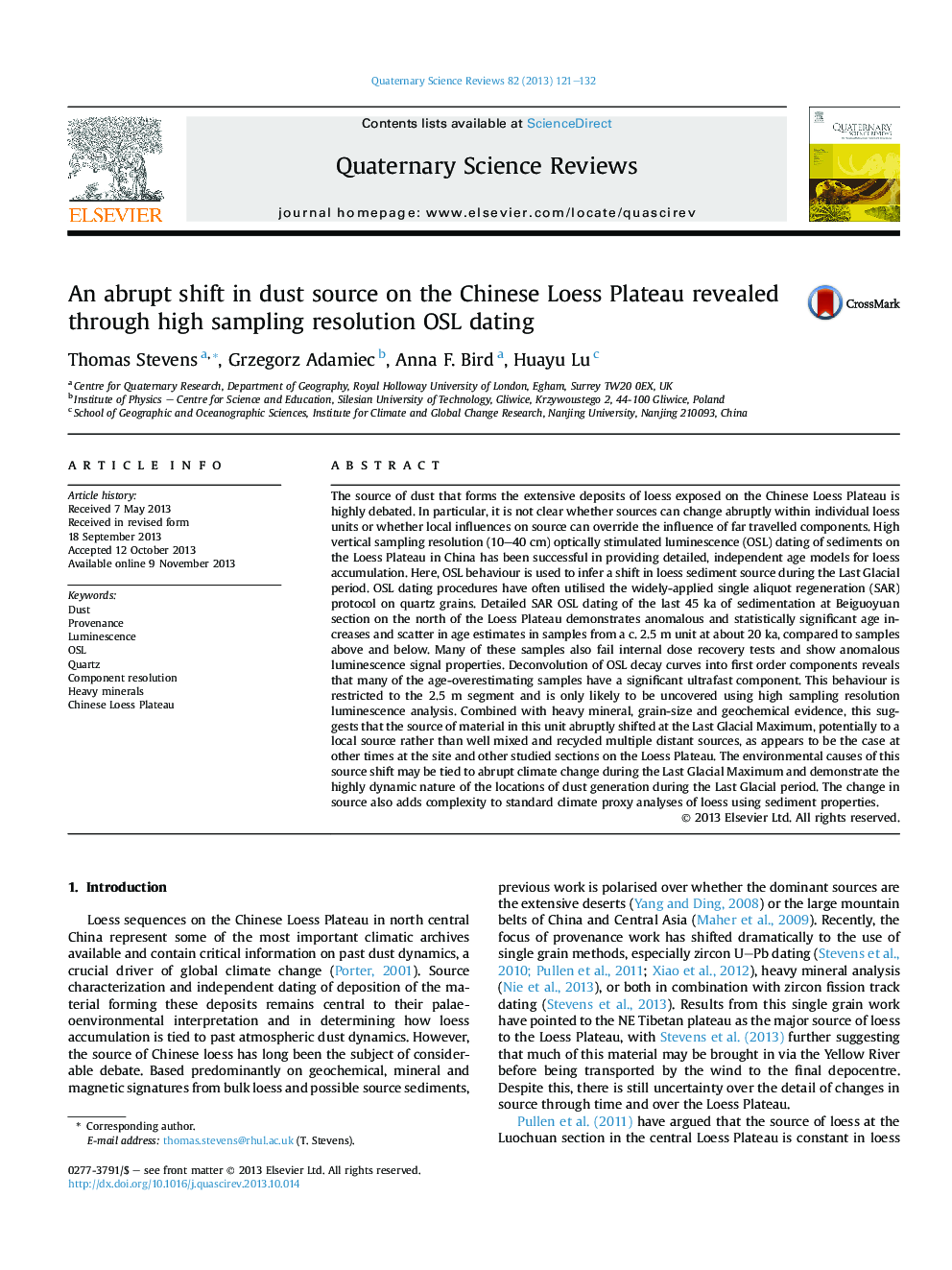| Article ID | Journal | Published Year | Pages | File Type |
|---|---|---|---|---|
| 4735434 | Quaternary Science Reviews | 2013 | 12 Pages |
•An abrupt change in Last Glacial dust source on the Chinese Loess Plateau.•Source change uncovered via novel use of luminescence dating and other methods.•New methodological approach to dust sourcing from loess.•Results impact routine dating and climate interpretation of loess deposits.
The source of dust that forms the extensive deposits of loess exposed on the Chinese Loess Plateau is highly debated. In particular, it is not clear whether sources can change abruptly within individual loess units or whether local influences on source can override the influence of far travelled components. High vertical sampling resolution (10–40 cm) optically stimulated luminescence (OSL) dating of sediments on the Loess Plateau in China has been successful in providing detailed, independent age models for loess accumulation. Here, OSL behaviour is used to infer a shift in loess sediment source during the Last Glacial period. OSL dating procedures have often utilised the widely-applied single aliquot regeneration (SAR) protocol on quartz grains. Detailed SAR OSL dating of the last 45 ka of sedimentation at Beiguoyuan section on the north of the Loess Plateau demonstrates anomalous and statistically significant age increases and scatter in age estimates in samples from a c. 2.5 m unit at about 20 ka, compared to samples above and below. Many of these samples also fail internal dose recovery tests and show anomalous luminescence signal properties. Deconvolution of OSL decay curves into first order components reveals that many of the age-overestimating samples have a significant ultrafast component. This behaviour is restricted to the 2.5 m segment and is only likely to be uncovered using high sampling resolution luminescence analysis. Combined with heavy mineral, grain-size and geochemical evidence, this suggests that the source of material in this unit abruptly shifted at the Last Glacial Maximum, potentially to a local source rather than well mixed and recycled multiple distant sources, as appears to be the case at other times at the site and other studied sections on the Loess Plateau. The environmental causes of this source shift may be tied to abrupt climate change during the Last Glacial Maximum and demonstrate the highly dynamic nature of the locations of dust generation during the Last Glacial period. The change in source also adds complexity to standard climate proxy analyses of loess using sediment properties.
